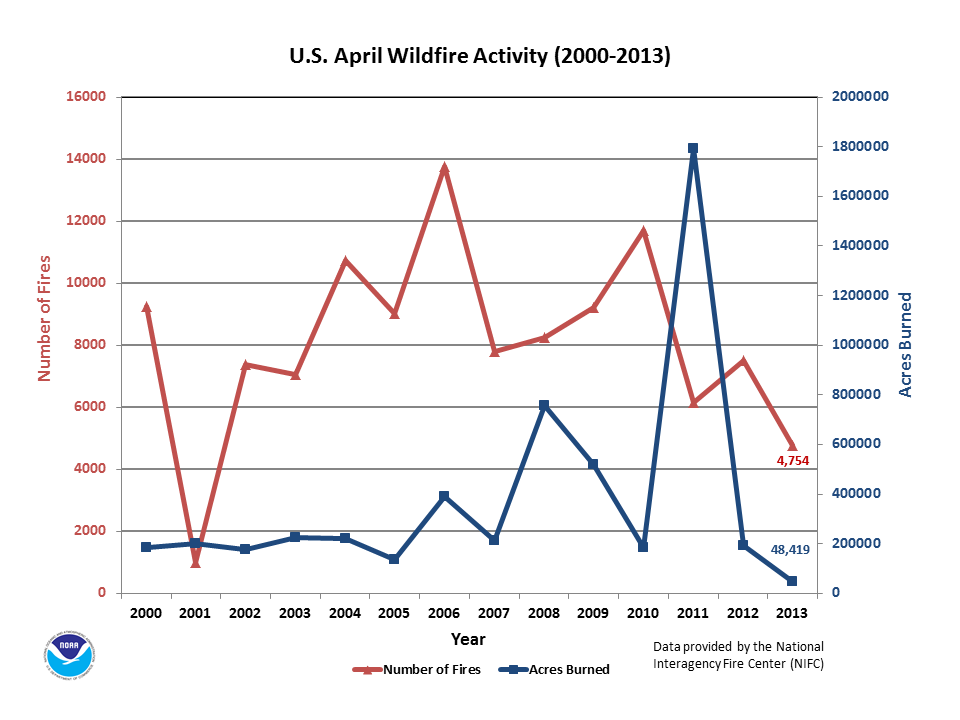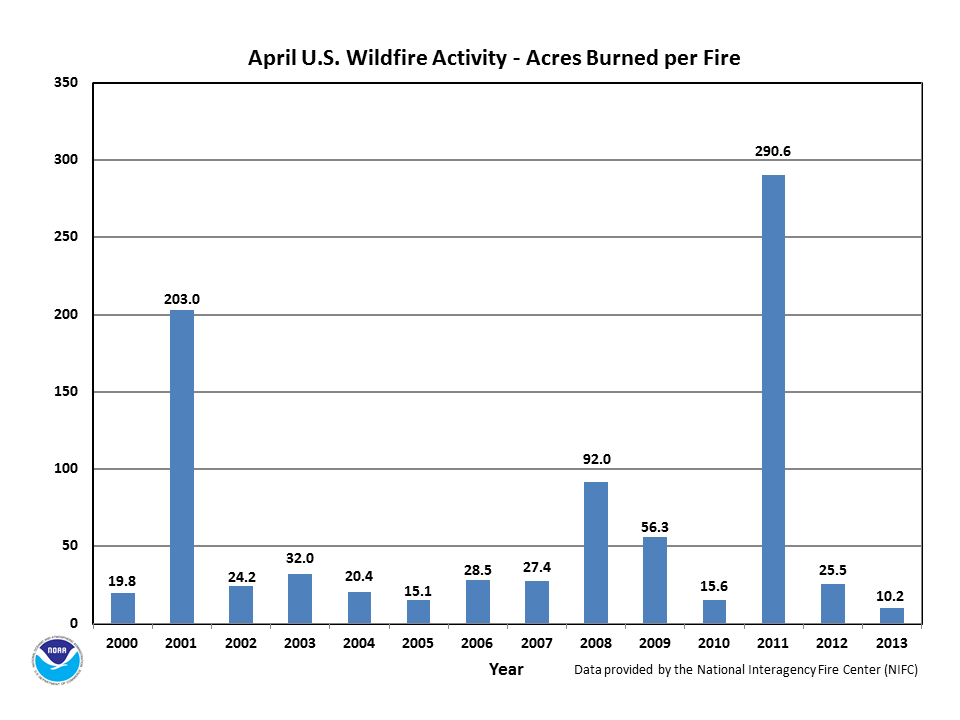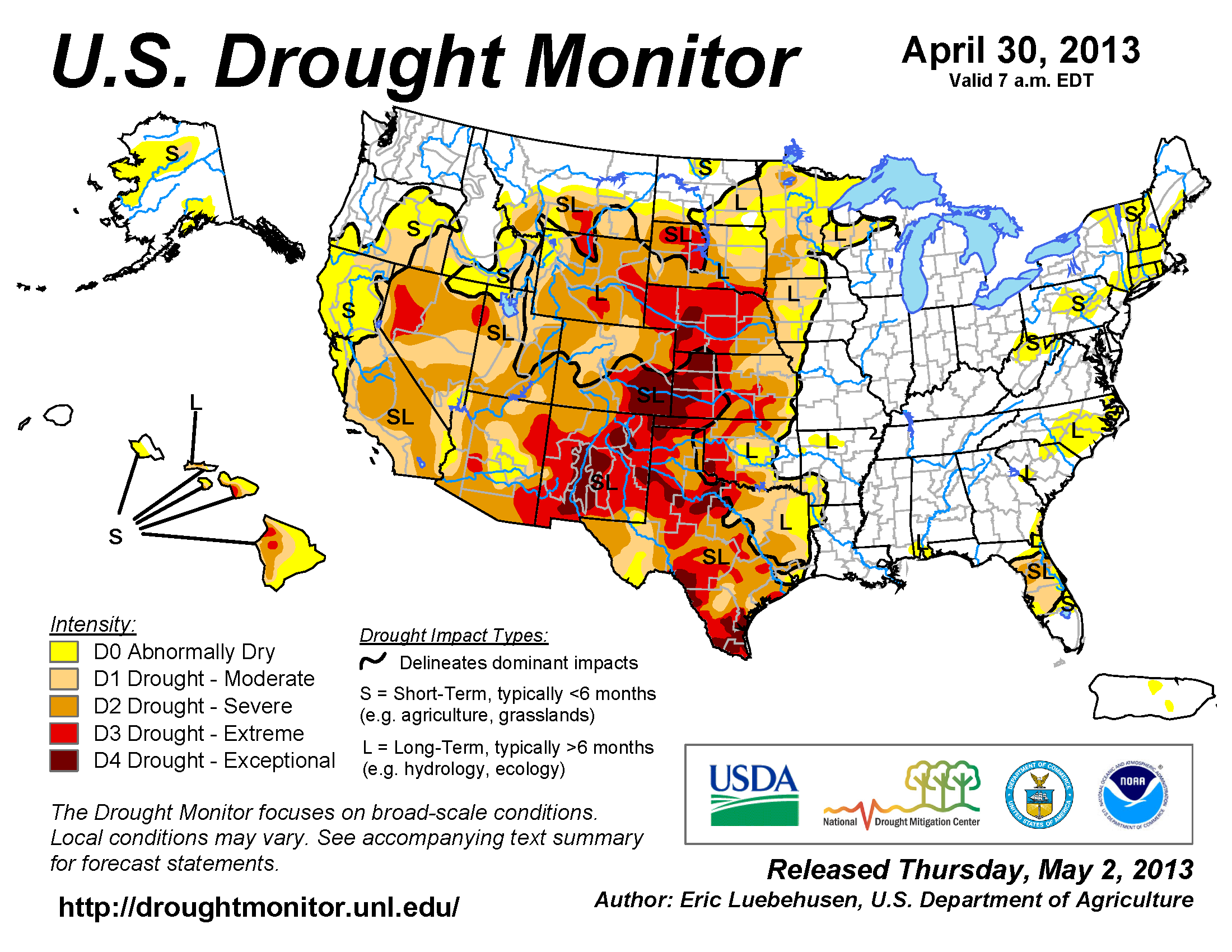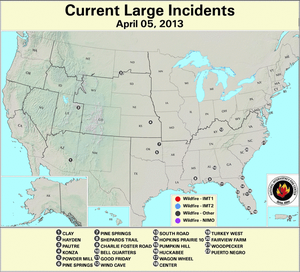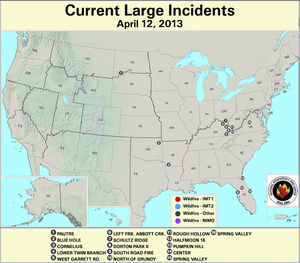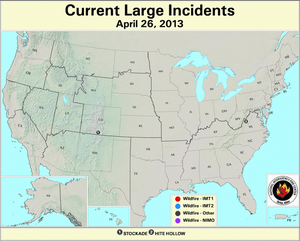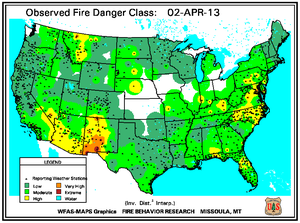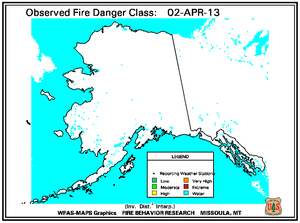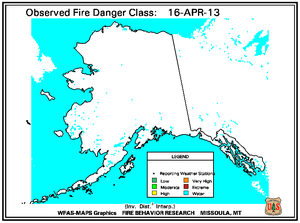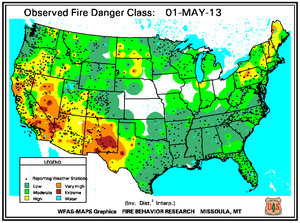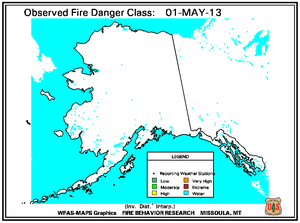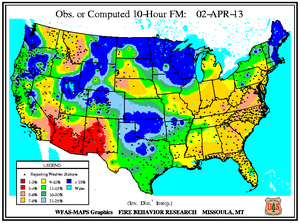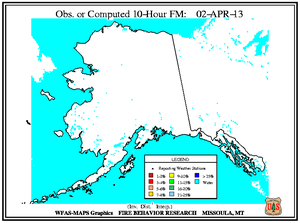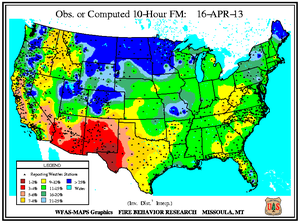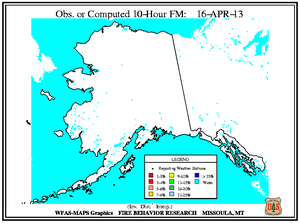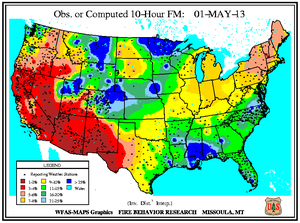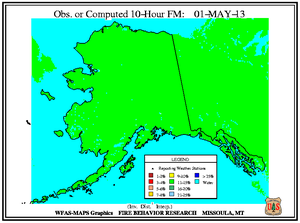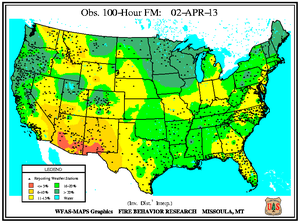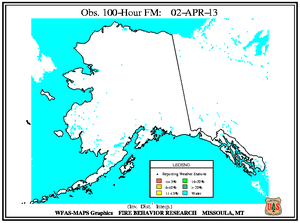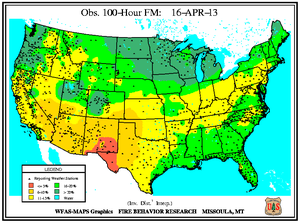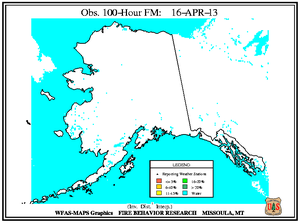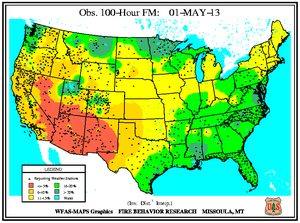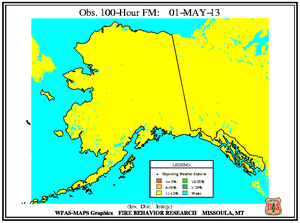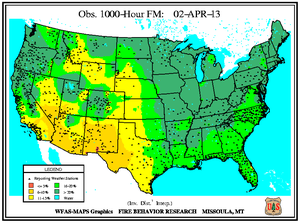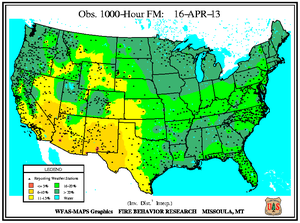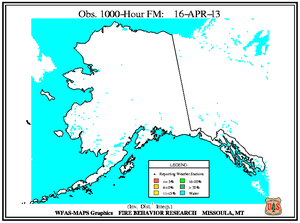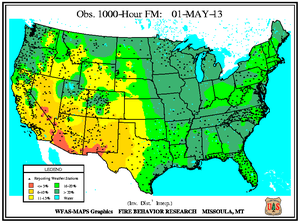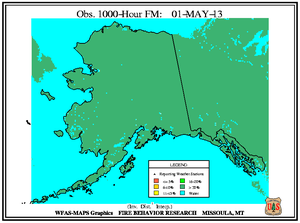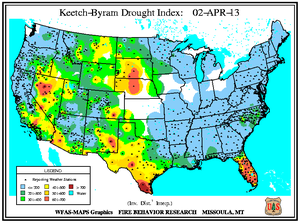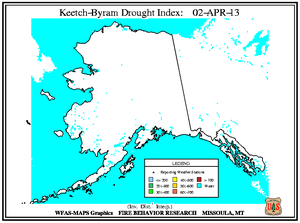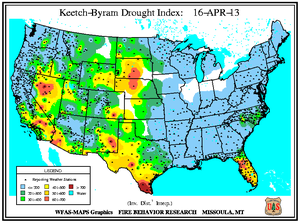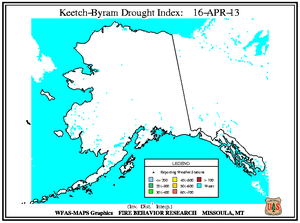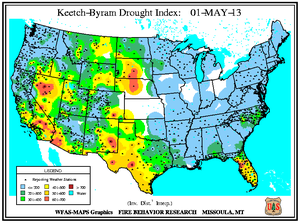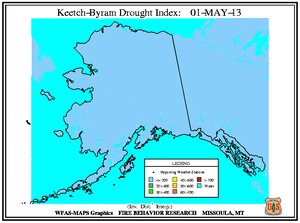Updated: 2 May 2013
Overview
As a whole, wildfire activity across the nation was well below average during April. The acreage burned and average fire size were record low, while the number of fires was the second lowest on record for the month. This continues a similar pattern with the rest of 2013 to date, and for the January-April period, the total acreage burned, the number of fires, and the average fire size were all record low. At the beginning of April, wildfire activity was mostly confined to the Southeast, particularly Florida, which had nine active fires. By mid-month, Florida continued to have several wildfires active, as well as the Ohio Valley and Central Appalachians. At the end of April, wet weather across the eastern two-thirds of the nation helped firefighters extinguish most fires, with only two wildfires active — one in Virginia and one in Colorado.
According to the National Interagency Fire Center (NIFC) :
For more wildfire statistics visit U.S. Wildfires.
Discussion
April was a wetter than average month for the nation. The central and southeastern U.S. was particularly wet, limiting wildfires in those areas. The Southwest and Northwest were drier than average, but April is before the typical wildfire seasons in those locations. The above-average precipitation across the Midwest and Northern Plains helped ameliorate drought conditions along the eastern and northern edges of the core drought areas affecting the Great Plains. Drought was also nearly eradicated in the Southeast, with the exception of Florida, where above-average precipitation the past several months has been beneficial. The Northern and Central Rockies also received significant precipitation, mostly in the form of snow, which improved drought conditions in that region. Abnormally dry conditions expanded in the Northeast, while the drought affecting the Southwest intensified.
Significant Events
Please note, this is a list of select fires that occurred during April. More comprehensive fire information can be found through Inciweb.
The Center Fire charred nearly 2,000 acres in Florida in early April. The fire, which was caused by a lightning strike, burned in the Merritt Island National Wildlife Refuge. Dry conditions along the state’s eastern coast, combined with strong winds, caused the fire to rapidly grow out of control. The fire burned within miles of the Kennedy Space Center, and significant resources were spent to keep the fire from spreading on the center’s grounds. Campgrounds in the area were evacuated due to the danger from the wildfire and heavy smoke. The fire was contained before causing damage to man-made structures.
Monthly Wildfire Conditions
Wildfire information and environmental conditions are provided by the National Interagency Fire Center (NIFC) and the U.S. Forest Service (USFS) Wildland Fire Assessment System (WFAS).
At the beginning of April, there were 22 active wildfires across the United States. Most of the wildfire activity was confined to the Southeast, where Florida had nine active fires, Alabama, Mississippi, South Carolina, and North Carolina each had one active wildfire. Four fires were burning in the Great Plains, two in Oklahoma and one each in Kansas and North Dakota. One additional fire was active in Arizona and Puerto Rico. The Pautre Fire in North Dakota charred over 10,800 acres of wild grasslands before being contained in late April. On April 2nd, high fire danger was confined to the Southwest, while low-10 hour fuel moistures were more widespread, covering much of the Central Plains, Ohio Valley, Southeast, and East Coast. Low 100-hour and 1,000-hour fuel moistures were present for the Southwest. High Keetch-Byram Drought Index (KBDI) values were observed in Florida, the Southern and Central Plains, and parts of the West.
In mid-April, there were 16 large wildfires active, mostly in the Southwest, Ohio Valley, and Central Appalachians. Four wildfires were active in Florida, six in Kentucky, and one each in Virginia and West Virginia. One fire was active in both Arkansas and Oklahoma, and the Pautre Fire continued to burn in North Dakota. High Fire Danger and low fuel moistures of all sizes were confined to the Southwest. Low KBDI values were observed in Florida, most of the Great Plains, and the West.
By the end of April, rainfall had suppressed wildfire activity across with the country with only two wildfires active. One wildfire was burning in Virginia and one wildfire was active in Colorado. On May 1st high fire danger was present in the Northeast and the Southwest. Low 10-hour fuel moistures were observed in the Northeast, while extremely low 10-hour fuel moistures (<2%) were present for much of the West. Extremely low 100-hour and 1,000-hour fuel moistures were also present in the Southwest.
 NOAA's National Centers for Environmental Information
NOAA's National Centers for Environmental Information
